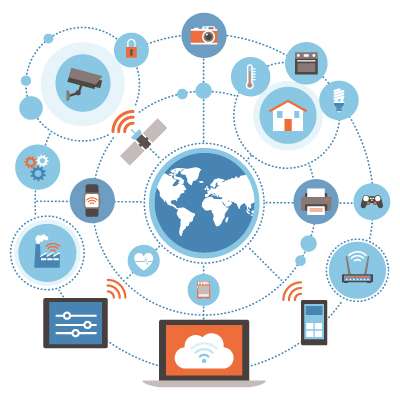CJ Attard Insights
Exploring the latest trends and insights in various industries.
Connected Chaos: Navigating the Quirks of Everyday IoT
Discover how to thrive in the chaotic world of IoT! Unravel the quirks of smart devices and transform your daily life today.
Understanding the Internet of Things: How It's Transforming Our Daily Lives
The Internet of Things (IoT) is revolutionizing the way we interact with our surroundings, enabling a seamless integration of technology into our daily lives. From smart home devices like thermostats and lights that can be controlled via smartphones to wearable health trackers that monitor our fitness levels, IoT applications are enhancing convenience and improving efficiency. With the power to collect and analyze data in real-time, these innovations help us make informed decisions, ultimately leading to a more streamlined and enriched lifestyle.
As the Internet of Things expands, its impact can be seen in various domains, including healthcare, transportation, and agriculture. For instance, smart health devices can alert patients and doctors about vital changes, facilitating timely medical interventions. In agriculture, IoT sensors can monitor soil conditions and crop health, leading to more sustainable farming practices. This transformation is creating a world where interconnected devices work together, paving the way for a smarter, more efficient future.

Top 5 Common IoT Devices and Their Quirks Explained
The Internet of Things (IoT) has revolutionized how we interact with everyday objects, leading to an eclectic range of devices designed to make life easier. Here are the top 5 common IoT devices and some of their quirky characteristics:
- Smart Thermostats: These devices learn your heating preferences over time. They can sometimes adjust temperatures based on your schedule or even your mood, which can lead to overzealous heating or cooling during unexpected changes.
- Smart Speakers: While they provide hands-free assistance, these devices occasionally misinterpret commands, leading to humorous and unexpected outcomes. They might play your least favorite song instead of your favorite!
Continuing the list, we have:
- Smart Light Bulbs: They can change colors and dim on command, but they're also known to flicker or change lights unexpectedly, which can create a quirky ambiance without notice.
- Smart Locks: Though they enhance security, their reliance on Wi-Fi can lead to frustrating malfunctions, such as locking you out during a power outage.
- Fitness Trackers: These wearable devices monitor health metrics, but they are notorious for their inaccuracy, leading users to question whether they really achieved that power walk or simply walked to the kitchen!
Is Your Smart Home Really Smart? Troubleshooting Everyday IoT Issues
In the age of connected devices, many homeowners embrace the convenience of smart technology. However, smart home systems can sometimes be more trouble than they're worth. Common issues include connectivity problems, device compatibility, and miscommunication between gadgets. When your smart devices don’t respond as expected, it can be frustrating. Begin troubleshooting by ensuring that all devices are connected to the same Wi-Fi network and that your router is functioning properly. Regularly updating firmware and software can also resolve many performance issues, as manufacturers often release patches to improve functionality and fix bugs.
Another critical aspect of troubleshooting your IoT devices is understanding their limitations. For instance, while many smart home products promote seamless integration, not all devices work together flawlessly. Frequent disconnections may indicate interference from other wireless devices or barriers like walls. If certain features aren’t functioning, consult the product manuals for troubleshooting tips and check online forums for community advice. By being proactive and informed, you can ensure your smart home is not just a collection of gadgets but a truly smart ecosystem.